Korg GA-40 Handleiding
Korg
Hifi systeem
GA-40
Bekijk gratis de handleiding van Korg GA-40 (2 pagina’s), behorend tot de categorie Hifi systeem. Deze gids werd als nuttig beoordeeld door 87 mensen en kreeg gemiddeld 4.6 sterren uit 44 reviews. Heb je een vraag over Korg GA-40 of wil je andere gebruikers van dit product iets vragen? Stel een vraag
Pagina 1/2

アコースティック・ギターをチューニングする場合
別売りのコルグ CM-100コンタクト・マイクを使用するときは、CM-
100 のプラグをINPUT端子に接続します。
内蔵マイクを使用するときは、何も接続しないでください。
2[STANDBY/ON]スイッチを押します。
メーター・モードに入ります。
音が約20分間入力されなかった場合は、自動的に電源がオフになりま
す。
3[GUITAR/BASS]スイッチを押し、チューニングする楽器を選びます。
チューニングの設定値は、それぞれ以下のようになります。
GUITAR:7B、6E 、5A、4D、3G 、2B、1E
BASS:LB(LowB)、4E、3A、2D、1G、HC(HighC)
4楽器を単音で鳴らします。
ディスプレイの左上に、入力した音に一番近い音名が表示されます。合
わせたい音名が表示されるように、楽器を大まかにチューニングしま
す。
内蔵マイクを使用するときは、マイクに楽器をできるだけ近づ
け、チューニング中に余計な音が入らないようにしてください。
5楽器を単音で鳴らしながら、メーターの先が中央を示し、チューニン
グ・ガイドの 中央のランプが点灯するようにチュー ニングします
(A=440Hzを基準とした場合)。
チューニング・ガイドは、楽器の音が低いときは左のランプが、音が高い
ときは右のランプが点灯します。メーターの1目盛りは、約2Hzです。
サウンドアウト・モード
基準音を聴きながらチューニングします。
1「メーター・モード」の手順 2 、3を行います。
2[SOUND]スイッチを押します。
サウンドアウト・モードに入り、スピーカーから音が出力されます。
3[SOUND]スイッチを押して、音名を選びます。
このとき出力音は、実際のギターの音より1 オクターブ高い音、また
ベースの音より2 オクターブ高い音が出力されます。
4音に合わせて、楽器をチューニングします。
フラット・チューニング
メーター・モード、サウンドアウト・モード時に、選んだ音名に対して1半音
(
♭
)〜 5半音(
♭♭♭♭♭
)下げたチューニングができます。
電源を切ると、この設定は消去されます。
1[FLAT]スイッチを何回か押し、音名に対して音のピッチをどの位下げ
るかを設定します。
2通常のメーター・モード、サウンドアウト・モードで、楽器をチューニング
します。
仕 様
音律: 12平均律
測定範囲:
Guitar...B1♭♭♭♭♭(46.249Hz)〜B6(1975.54Hz)
Bass...B0♭♭♭♭♭(23.12Hz)〜B5(987.77Hz)
基準発信音: Guitar...7B、6E、5A、4D、3G、2B、1E
Bass...LB(LowB)、4E、3A、2D、1G、HC(HighC)
チューニング・モード:
メーター・モード(AUTO)
サウンドアウト・モード(MANUAL)
フラット・チューニング:
1半音(
♭
)〜 5半音(
♭♭♭♭♭
)の半音ステップ
測定精度: ±1セント以内
サウンド精度: ±1.5セント以内
接続端子: INPUT端子(φ6.3mm モノラル標準ジャック)
OUTPUT端子(φ6.3mm モノラル標準ジャック)
スピーカー: ダイナミック・スピーカー(φ28mm)
電源: 単4電池 2本(3V)
電池寿命: 約85 時間(メーター・モード、A4 連続入力、マンガ
ン電池使用時)
外形寸法: 100mm(W)x67mm(D)x17mm(H)
重量: 69g(本体のみ)、88g(電池を含む)
付属品: 取扱説明書、動作確認用単4 電池(2本)
*仕様および外観は、改良のため予告無く変更する場合があります。
取扱説明書
安全上のご注意
火災・感電・人身傷害の危険を防止するには以下の指示を守ってください
警告
この注意事項を無視した取り扱いをすると、死亡や重傷を負う可能性が予想されます
・次のような場合には、直ちに電源を切る。
○ 異物が内部に入ったとき ○製品に異常や故障が生じたとき
修理が必要なときは、サービス・センターへ依頼してください。
・本製品を分解したり改造したりしない。
・
修理、部品の交換などで、取扱説明書に書かれていること以外は絶対にしない。
・大音量や不快な程度の音量で長時間使用しない。
万一、聴力低下や耳鳴りを感じたら、専門の医師に相談してください。
・本製品に異物(燃えやすいもの、硬貨、針金など)を入れない。
・温度が極端に高い場所(直射日光の当たる場所、暖房機器の近く、発熱する機器の上な
ど)での使用や保管はしない。
・振動の多い場所で使用や保管はしない。
・ホコリの多い場所で使用や保管はしない。
・風呂場、シャワー室で使用や保管はしない。
・雨天時の野外のように、湿気の多い場所や水滴のかかる場所で、使用や保管はしない。
・本製品の上に、花瓶のような液体が入ったものを置かない。
・本製品に液体をこぼさない。
・濡れた手で本製品を使用しない。
注意
この注意事項を無視した取り扱いをすると、傷害を負うまたは物理的損害が発生する可能性があります
・正常な通気が妨げられない所に設置して使用する。
・ラジオ、テレビ、電子機器などから十分に離して使用する。
ラジオやテレビ等に接近して使用すると、本製品が雑音を受けて誤動作する場合があ
ります。また、ラジオ、テレビ等に雑音が入ることがあります。
本製品をテレビ等の横に設置すると、本製品の磁場によってテレビ等の故障の原因に
なることがあります。
・外装のお手入れは、乾いた柔らかい布を使って軽く拭く。
・長時間使用しないときは、電池の液漏れを防ぐために電池を抜く。
・電池は幼児の手の届かないところへ保管する。
・スイッチやツマミなどに必要以上の力を加えない。
故障の原因になります。
・外装のお手入れに、ベン やシジン ンナー系の液体、コンパウンド質、強燃性のポリッ
シャーは使用しない。
・不安定な場所に置かない。
保証規定(必ずお読みください)
本保証書は、保証期間中に本製品を保証するもので、付属品類(ヘッドホンなど)は保証の対象
になりません。保証期間内に本製品が故障した場合は、保証規定によって無償修理いたします。
1. 本保証書の有効期間はお買い上げ日より1ケ年です。
2. 次の修理等は保証期間内であっても有料修理となります。
・
消耗部品(電池、スピーカーなど)の交換。・お取扱い方法が不適当のために生じた故障。
・
天災(火災、浸水等)によって生じた故障。・故障の原因が本製品以外の他の機器にある場合。
・不当な改造、調整、部品交換などにより生じた故障または損傷。
・
保証書にお買い上げ日、販売店名が未記入の場合、または字句が書き替えられている場合。
・本保証書の提示がない場合。
尚、当社が修理した部分が再度故障した場合は、保証期間外であっても、修理した日より3
ケ月以内に限り無償修理いたします。
3. 本保証書は日本国内においてのみ有効です。 ThiswarrantyisvalidonlyinJapan.
4. お客様が保証期間中に移転された場合でも、保証は引き続きお使いいただけます。詳しく
は、サービス・センターまでお問い合わせください。
5. 修理、運送費用が製品の価格より高くなることがありますので、あらかじめサービス・セン
ターへご相談ください。発送にかかる費用は、お客様の負担とさせていただきます。
6. 修理中の代替品、商品の貸し出し等は、いかなる場合においても一切行っておりません。
本製品の故障、または使用上生じたお客様の直接、間接の損傷につきましては、弊社はいっさ
いの責任を負いかねますのでご了承ください。
本保証書は、保証規定により無料修理をお約束するためのもので、これよりお客様の法律上の
権利を制限するものではありません。
■お願い
1. 保証書に販売年月日等の記入がない場合は無効となります。記入できないときは、お買い
上げ年月日を証明できる領収書等と一緒に保管してください。
2. 保証書は再発行致しませんので、紛失しないように大切に保管してください。
コルグGA-40 保証書
本保証書は、上記の保証規定により無料修理をお約束するものです。
お買い上げ日 年 月 日
販売店名
アフターサービス
アフターサービスについてのご質問、ご相談は、サービス・センターへお問い合わせください。
商品のお取り扱いについてのご質問、ご相談は、お客様相談窓口へお問い合わせください。
お客様相談窓口 TEL03(3799)9086
● サービス・センター: 〒143-0001 東京都大田区東海5-4-1 明正大井5 号営業所
コル 流セグ物 ンター内 TEL03(3799)9085
このたびは、コルグ・ギター/ベース・チューナーGA-40をお買い上げい
ただきまして、誠にありがとうございます。
はじめに
電池の入れ方
GA-40 の裏 電池の蓋を、側にある ス
ライドさせながらはずします。極性に気
を付けて電池を入れ、蓋を閉めます。
誤動作が発生し、電源を何度か入れ直しても改善しない場合は、電池を
いったんはずして、再度入れ直してください。
付属の電池は動作確認用ですので、通常より寿命が短い場合が
あります。
電池の容量が少なくなると、ディスプレ
イの左に電池マークが表示されます。
このときは、早めに新しい電池と交換
してください。電池交換は、GA-40の
電源をオフにしてから行ってください。
スタンドの使い方
裏側にあるスタンドを起こすと、GA-
40を立てることができます。
チューニングの方法
[STANDBY/ON]スイッチ
[GUITAR/BASS]スイッチ
[FLAT]スイッチ
ディスプレイ
INPUT端子
チューニング・ガイド
内蔵マイク [SOUND]スイッチ
スピーカー
OUTPUT端子
メーター・モード
ディスプレイのメーターでチューニングします。
1チューナーを接続します。接続するギターによって、以下のように接続
方法が異なります。
エレキ・ギターをチューニングする場合
市販のモノラル・プラグのケーブルを使用してください。
ケーブルで、GA-40の INPUT端子にギターを接続します。
INPUT端子にプラグを接続すると、内蔵マイクは使用できませ
ん。
GA-40のOUTPUT端子を使用するときは、市販のモノラル・プラグ
のケーブルを使用してください。GA-40のINPUT端子にギターを接
続してから、OUTPUT端子にアンプ類を接続します。ギターの音は、
GA-40 のOUTPUT端子からアンプ類へ出力されますので、接続し
たままの状態でチューニングや演奏を行うことができます。
OUTPUT 端子とアンプ類を接続しているときは、絶対にIN -
PUT端子からプラグを抜かないでください。プラグを抜くと、自
動的に内蔵マイクが使われます。このとき、内蔵マイクに音が入
るとハウリングが起こり、アンプ類を破損する恐れがあります。
IMPORTANT NOTICE TO CONSUMERS
This product has been manufactured according to strict specifications
and voltage requirements that are applicable in the country in which it
is intended that this product should be used. If you have purchased this
product via the internet, through mail order, and/or via a telephone
sale, you must verify that this product is intended to be used in the
country in which you reside.
WARNING: Use of this product in any country other than that for
which it is intended could be dangerous and could invalidate the
manufacturer’s or distributor’s warranty.
Please also retain your receipt as proof of purchase otherwise your product
may be disqualified from the manufacturer’s or distributor’s warranty.
Introduction
Installing the batteries
Slide and remove the battery compartment
cover located on the back of the GA-40.
Insert the batteries ensuring that you
observe the correct polarity, and replace
the cover.
If the GA-40 malfunctions, and you are unable to solve the
problem by turning the power off and on again, try removing
the batteries and then reinstall them.
The included batteries are provided for the purpose of verifying
operation and therefore may have a shorter lifetime than usual.
When the batteries run low, a battery
indicator will appear in the left of the
display. When this indicator appears, replace
the batteries as soon as possible. Power-off
the GA-40 before you replace the batteries.
Using the stand
By opening the stand located on the back,
you can position the GA-40 at a conve-
nient angle.
Using the tuner
[STANDBY/ON] button
[GUITAR/BASS] button
[FLAT] button
Display
INPUT jack
Tuning guide
Internal mic [SOUND] button
Speaker
OUTPUT jack
Meter mode
This mode lets you tune using the meter in the display.
1Connect the tuner. The connection method will depend on the type
of guitar you're using.
When tuning an electric guitar or bass
Be sure to use an instrument cable for connection to the GA-40's
INPUT jack.
You can't use the internal mic if a plug is inserted in the IN-
PUT jack.
Connect your guitar to the GA-40's INPUT jack, and then
connect your amp to the OUTPUT jack. The sound of your guitar
will be sent from the GA-40's OUTPUT jack to your amp,
allowing you to tune or perform while the GA-40 remains
connected.
Never disconnect the plug from the INPUT jack while the
OUTPUT jack is connected to your amp. When you discon-
nect the plug, the internal mic will be used automatically. If
sound is received by the internal mic at this time, acoustic
feedback will occur, possibly damaging your amp.
Precautions
Location
Using the unit in the following locations can result in a malfunction.
• In direct sunlight
• Locations of extreme temperature or humidity
• Excessively dusty or dirty locations
• Locations of excessive vibration
• Close to magnetic fields
Power supply
Be sure to turn the power switch to OFF when the unit is not in use.
Remove the battery in order to prevent it from leaking when the unit is not
in use for extended periods.
Interference with other electrical devices
Radios and televisions placed nearby may experience reception interfer-
ence. Operate this unit at a suitable distance from radios and televisions.
Handling
To avoid breakage, do not apply excessive force to the switches or controls.
Care
If the exterior becomes dirty, wipe it with a clean, dry cloth. Do not use
liquid cleaners such as benzene or thinner, or cleaning compounds or
flammable polishes.
Keep this manual
After reading this manual, please keep it for later reference.
Keeping foreign matter out of your equipment
Never set any container with liquid in it near this equipment. If liquid gets
into the equipment, it could cause a breakdown, fire, or electrical shock. Be
careful not to let metal objects get into the equipment.
THE FCC REGULATION WARNING (for U.S.A.)
This equipment has been tested and found to comply with the limits for a
Class B digital device, pursuant to Part 15 of the FCC Rules. These limits
are designed to provide reasonable protection against harmful interference
in a residential installation. This equipment generates, uses, and can
radiate radio frequency energy and, if not installed and used in accordance
with the instructions, may cause harmful interference to radio communi-
cations. However, there is no guarantee that interference will not occur in
a particular installation. If this equipment does cause harmful interference
to radio or television reception, which can be determined by turning the
equipment off and on, the user is encouraged to try to correct the
interference by one or more of the following measures:
• Reorient or relocate the receiving antenna.
• Increase the separation between the equipment and receiver.
• Connect the equipment into an outlet on a circuit different from
that to which the receiver is connected.
• Consult the dealer or an experienced radio/TV technician for help.
Unauthorized changes or modification to this system can void the user’s
authority to operate this equipment.
Notice regarding disposal (for EU)
If this “crossed-out trash can” symbol is shown on the product
or in the operating manual, you must dispose of the product in
an appropriate way. Do not dispose of this product along with
your household trash. By disposing of this product correctly,
you can avoid environmental harm or health risk. The correct
method of disposal will depend on your locality, so please
contact the appropriate local authorities for details.
When tuning an acoustic guitar
If you're using a separately sold Korg CM-100 contact mic,
connect the CM-100's plug to the GA-40's INPUT jack.
If you're using the internal mic, don't connect anything.
2Press the [STANDBY/ON] button.
The GA-40 will be in Meter mode.
The power will turn off automatically if the tuner is not used for
approximately twenty minutes.
3Press the [GUITAR/BASS] button to select the instrument you're
tuning. The tuning pitches will be as follows.
GUITAR: 7B, 6E, 5A, 4D, 3G, 2B, 1E
BASS: LB (Low B), 4E, 3A, 2D, 1G, HC (High C)
4Play a single note on your instrument.
The name of the note closest to the note you played will appear
in the upper left of the display. Tune your instrument so that the
desired note name appears.
If you're using the internal mic, position the mic as close as
possible to your instrument, and ensure that extraneous back-
ground sounds are not picked up by the mic while tuning.
5While playing a single note, tune your instrument so that the indi-
cator in the center of the tuning guide is lit (if the tuning reference
is A=440 Hz).
The left indicator of the tuning guide will light if the pitch of
your instrument is too low, and the right indicator will light if the
pitch is too high. Each step in the meter is approximately 2 Hz.
Sound Out mode
This mode lets you listen to a reference tone while you tune.
1Perform steps 2 and 3 of “Meter mode.”
2Press the [SOUND] button.
The GA-40 will be in Sound Out mode, and the speaker will play
a reference tone.
3Press the [SOUND] button again to select the desired note name.
The reference tone is one octave higher than the actual pitch of your
guitar, and two octaves higher than the actual pitch of your bass.
4Tune your instrument to match the reference tone.
Flat tunings
In either Meter mode or Sound Out mode, you can tune to a pitch that
is between one semitone ( ) and five semitones ( ) below the
selected note name.
This setting will not be remembered when you turn off the power.
1Press the [FLAT] button several times to specify how far you want
to lower the pitch relative to the note name.
2Tune your instrument in the usual way using Meter mode or Sound
Out mode.
Specifications
Scale: 12-note equal temperament
Detection range: Guitar...B1 (46.249 Hz) – B6 (1975.54Hz)
Bass...B0 (23.12 Hz) – B5 (987.77 Hz)
Reference tone: Guitar...7B, 6E, 5A, 4D, 3G, 2B, 1E
Bass...LB (Low B), 4E, 3A, 2D, 1G, HC (High C)
Tuning modes: Meter mode (AUTO), Sound Out mode (MANUAL)
Flat tuning:
Semitone steps of 1 semitone (
) 5 semitones (
)
Detection accuracy:
±1 cents or better
Tone accuracy: ±1.5 cents or better
Connectors: INPUT jack (1/4” mono phone jack)
OUTPUT jack (1/4” mono phone jack)
Speaker: Dynamic speaker (28 mm diameter)
Power supply: Two AAA batteries (3V)
Battery life: Approximately 85 hours (Meter mode, continuous
A4 input, zinc-carbon batteries)
Dimensions: 100 mm (W) x 67mm (D) x 17mm (H)
3.94” (W) x 2.64” (D) x 0.67” (H)
Weight: 69g (without batteries), 88g (with batteries)
2.43oz. (without batteries), 3.10oz. (with batteries)
Included items:
Owner's manual, two AAA batteries for verifying
operation
*Specifications and appearance are subject to change without notice for
improvement of the product.
Owner’s Manual
Thank you for purchasing the Korg GA-40 guitar/bass tuner.
2005 KORG INC.
4015-2 Yanokuchi, Inagi-city, Tokyo 206-0812 Japan

Si le GA-40 ne fonctionne pas et si vous n'arrivez pas à
corriger le problème en mettant à plusieurs reprises l'appareil
hors et sous tension, essayez d'enlever puis de remettre les
piles en place.
Les piles fournies sont destinées à vérifier le bon fonctionne-
ment de votre appareil. Il est possible que leur durée de vie
soit plus courte que la normale.
Lorsque les piles sont faibles, le symbole
de la pile apparaît dans la partie gauche
de l'afficheur. Remplacez alors les piles
dès que possible. Mettez le GA-40 hors
tension avant de remplacer les piles.
Utilisation du support
En ouvrant le support situé à l'arrière,
vous pouvez incliner le GA-40 sous un
angle permettant une lecture aisée de
l'affichage.
Utilisation de l'accordeur
Commutateur [STANDBY/ON]
Commutateur [GUITAR/BASS]
Touche [FLAT]
Afficheur
Prise INPUT
Guide d’accord
Microphone interne Commutateur [SOUND]
Haut-parleur
Prise OUTPUT
Mode Compteur
Ce mode vous permet d'accorder en observant le compteur affiché
à l’écran.
1Raccordez l'accordeur. La méthode utilisée dépendra du type de
guitare raccordée.
Pour accorder une guitare électrique
Utilisez un câble avec fiches monophonique disponible dans le
commerce.
Utilisez le câble pour raccorder votre guitare à la prise INPUT du
GA-40.
Vous ne pouvez pas utiliser le microphone interne si une fi-
che est insérée dans la prise INPUT.
Raccordez votre instrument à la prise INPUT du GA-40, puis
raccordez votre amplificateur à la prise OUTPUT. Utilisez un
câble avec fiches monophonique disponible dans le commerce.
Le son de votre guitare sera envoyé de la prise OUTPUT du GA-
40 à votre amplificateur, vous permettant ainsi d'accorder ou de
jouer alors que le GA-40 reste raccordé.
Ne débranchez jamais la fiche de la prise INPUT alors que la
prise OUTPUT est raccordée à votre ampli. Quand vous dé-
branchez la fiche, le microphone interne entre automatique-
ment en fonction. Si un son est reçu par le microphone in-
terne à ce moment, un effet Larsen se produira, et votre am-
plificateur risque d'être endommagé.
Pour accorder une guitare acoustique
Si vous utilisez un microphone de contact Korg CM-100 vendu
séparément, raccordez le CM-100 à la prise INPUT du GA-40.
Si vous utilisez le microphone interne, ne branchez rien.
2Appuyez sur le commutateur [STANDBY/ON].
Le GA-40 passera en mode Compteur.
L’accordeur se mettra automatiquement hors tension si vous ne
l’utilisez pas pendant une vingtaine de minutes.
3Appuyez sur le commutateur [GUITAR/BASS] pour sélectionner
l'instrument accordé.
Notes détectées :
GUITAR: 7B, 6E, 5A, 4D, 3G, 2B, 1E
BASS: LB (Low B), 4E, 3A, 2D, 1G, HC (High C)
Manuel D’utilisation
Merci d’avoir fait l’acquisition de l'accordeur pour guitare et basse
GA-40 Korg.
Précautions
Emplacement
L’utilisation de cet instrument dans les endroits suivants peut en entraîner
le mauvais fonctionnement.
• En plein soleil
• Endroits très chauds ou très humides
• Endroits sales ou fort poussiéreux
• Endroits soumis à de fortes vibrations
• A proximité de champs magnétiques
Alimentation
Lorsque vous n’utilisez pas l’appareil, n’oubliez pas de le mettre hors
tension. Retirez les piles pour éviter toute fuite lorsque l’appareil ne sera
pas utilisé pendant de longues périodes de temps.
Interférences avec d’autres appareils électriques
Les postes de radio et de télévision situés à proximité peuvent par
conséquent souffrir d’interférences à la réception. Veuillez dès lors faire
fonctionner cet appareil à une distance raisonnable de postes de radio et de
télévision.
Maniement
Pour éviter de les endommager, manipulez les commandes et les boutons
de cet instrument avec soin.
Entretien
Lorsque l’instrument se salit, nettoyez-le avec un chiffon propre et sec. Ne
vous servez pas d’agents de nettoyage liquides tels que du benzène ou du
diluant, voire des produits inflammables.
Conservez ce manuel
Après avoir lu ce manuel, veuillez le conserver soigneusement pour toute
référence ultérieure.
Evitez toute intrusion d’objets ou de liquide
Ne placez jamais de récipient contenant du liquide près de l’instrument. Si
le liquide se renverse ou coule, il risque de provoquer des dommages, un
court-circuit ou une électrocution.Veillez à ne pas laisser tomber des objets
métalliques dans le boîtier (trombones, par ex.).
Notice concernant l’élimination du produit (UE
seulement)
Si ce symbole “Poubelle barrée” est imprimé sur le produit ou
dans le manuel de l’utilisateur, vous devez vous débarrasser du
produit de la manière appropriée. Ne jetez pas ce produit avec
vos ordures ménagères. En vous débarrassant correctement du
produit, vous préviendrez les dommages environnementaux et
les risques sanitaires. La méthode correcte d'élimination
dépendra de votre lieu d’habitation, aussi veuillez contacter les
autorités locales concernées pour les détails.
REMARQUE IMPORTANTE POUR LES CLIENTS
Ce produit a été fabriqué suivant des spécifications sévères et des
besoins en tension applicables dans le pays où ce produit doit être
utilisé. Si vous avez acheté ce produit via l’internet, par vente par
correspondance ou/et vente par téléphone, vous devez vérifier que ce
produit est bien utilisable dans le pays où vous résidez.
ATTENTION: L’utilisation de ce produit dans un pays autre que celui
pour lequel il a été conçu peut être dangereuse et annulera la garantie
du fabricant ou du distributeur. Conservez bien votre récépissé qui est
la preuve de votre achat, faute de quoi votre produit ne risque de ne
plus être couvert par la garantie du fabricant ou du distributeur.
Les noms de sociétés, noms de produits et noms de formats, etc. dans ce
manuel sont des marques de fabrique ou des mar-ques déposées de
leurs propriétaires respectifs.
Introduction
Mise en place des piles
Faites glisser le couvercle du comparti-
ment des piles à l'arrière du GA-40 et
enlevez-le. Insérez les piles en respectant
leur polarité et remettez le couvercle en
place.
4Jouez une note sur votre instrument.
Le nom de la note s’en rapprochant le plus apparaîtra dans la
partie supérieure gauche de l'afficheur. Accordez grossièrement
votre instrument de telle manière que le nom de la note
souhaitée apparaisse.
Si vous utilisez le microphone interne, disposez votre instru-
ment aussi près que possible du microphone et assurez-vous
que les sons extérieurs ne puissent pas être captés pendant
l'accord.
5Tout en jouant une note sur votre instrument, accordez celui-ci de
telle manière que la diode au centre du guide d'accord s'allume (si
la fréquence de référence est A = 440 Hz).
La diode à gauche s'allumera si la hauteur de la note produite par
votre instrument est trop basse et celle à droite si elle est trop
élevée. Chaque graduation du compteur représente environ 2 Hz.
Mode Son
Ce mode vous permet d'écouter une note de référence pendant
l'accord.
1Effectuez les opérations 2 et 3 de “Mode Compteur”.
2Appuyez sur le commutateur [SOUND].
Le GA-40 passera en mode Son et le haut-parleur produira une
note de référence.
3 Appuyez sur le commutateur [SOUND] pour sélectionner le nom
de la note souhaitée.
La note de référence est une octave plus haut que la la note
produite par votre guitare, et deux octaves plus haut que celle
produite par votre basse.
4Accordez votre instrument sur la hauteur de la note de référence
entendue.
Accord en bémol
En mode Compteur ou en mode Son, vous pouvez accorder entre
un demi-ton ( ) et cinq demi-tons ( ) au-dessous de la note
sélectionnée. Ce réglage est perdu lorsque vous mettez l'appareil
hors tension.
1Appuyez à plusieurs reprises sur la touche [FLAT] pour spécifier
l’accord en bémol relativement à la note.
2Accordez votre instrument de la manière habituelle en mode Comp-
teur ou Son.
Spécifications
Gamme: 12 notes tempérament égal
Plage de détection: Guitar...B1 (46,249 Hz) – B6 (1975,54Hz)
Bass...B0 (23,12 Hz) – B5 (987,77 Hz)
Note de référence: Guitar...7B, 6E, 5A, 4D, 3G, 2B, 1E
Bass...LB (Low B), 4E, 3A, 2D, 1G, HC (High C)
Modes d'accord: Mode Compteur (AUTO)
Mode Son (MANUEL)
Accord en bémol: Un demi-ton ( ) à cinq demi-tons ( ) par
incrément d'un demi-ton
Précision de la détection:
Supérieure à ±1 centième
Précision du son: Supérieure à ±1,5 centième
Prises: prise INPUT (jack mono 1/4”)
prise OUTPUT (jack mono 1/4”)
Haut-parleur:
Haut-parleur dynamique (28 mm de diamètre)
Alimentation: Deux piles de format AAA (3V)
Durée de vie des piles: Environ 85 heures (mode Compteur, note
A4 en fonctionnement continu, avec des
piles zinc-carbone)
Dimensions: 100 (L) x 67 (P) x 17 (H) mm
Poids: 69 g (sans les piles), 88 g (piles comprises)
Accessoires fournis: Mode d'emploi de l'utilisateur, deux piles
AAA pour vérification du fonctionnement
*Les spécifications et l'aspect extérieur sont sujets à modifications
sans préavis à des fins d'amélioration du produit.
Wenn eine Fehlfunktion am GA-40 auftritt und Sie das
Problem durch wiederholtes Aus- und Einschalten nicht
beheben können, nehmen Sie die Batterien heraus und setzen
sie wieder ein.
Die mitgelieferten Batterien dienen zur Bestätigung der rich-
tigen Funktion des Geräts und können eine kürzere Lebens-
dauer als normale Batterien haben.
Wenn die Batterien schwach werden,
erscheint eine Anzeige links im Display.
Wenn diese Anzeige erscheint, ersetzen
Sie die Batterien so schnell wie möglich.
Schalten Sie das GA-40 Gerät aus, bevor
Sie die Batterien ersetzen.
Verwendung des Ständers
Durch Öffnen des Ständers an der
Rückseite können Sie das GA-40 in einem
praktischen Winkel aufstellen.
Verwendung des Stimmgeräts
Ein/Standby-Taste [STANDBY/ON]
Gitarre-/Basstaste [GUITAR/BASS]
Moll-Taste [FLAT]
Display
INPUT-Buchse
Stimm-Anleitung
Internes Mikrofon Klang-Taste [SOUND]
Lautsprecher
OUTPUT-Buchse
Messmodus
Dieser Modus erlaubt es Ihnen, mit einer Messanzeige im Display
zu stimmen.
1Scließen Sie das Stimmgerät an. Die Anschlussmethode ist je nach
verwendeter Gitarre unterschiedlich.
Beim Stimmen einer elektrischen Gitarre
Verwenden Sie ein handelsübliches Kabel mit Mono-Steckern.
Verwenden Sie das Kabel zum Anschließen Ihrer Gitarre an die
INPUT-Buchse des GA-40.
Sie können nicht das interne Mikrofon verwenden, wenn ein
Stecker in die INPUT-Buchse eingesteckt ist.
Schließen Sie Ihre Gitarre an die INPUT-Buchse des GA-40 an
und danach Ihren Verstärker an die OUTPUT-Buchse. Der Sound
Ihrer Gitarre wird von der OUTPUT-Buchse des GA-40 zu Ihrem
Verstärker geschickt und erlaubt es, zu stimmen oder zu spielen,
während der GA-40 angeschlossen bleibt.
Ziehen Sie nie den Stecker von der INPUT-Buchse ab, wäh-
rend die OUTPUT-Buchse mit dem Verstärker verbunden ist.
Wenn Sie den Stecker abziehen, wird automatisch das interne
Mikrofon verwendet. Wenn zu diesem Zeitpunkt Klang vom
internen Mikrofon empfangen wird, tritt Rückkopplung auf
und kann möglicherweise den Verstärker beschädigen.
Beim Stimmen einer akustischen Gitarre
Wenn Sie einen getrennt erhältliches Korg CM-100 Kontakt-
mikrofon verwenden, schließen Sie den Stecker des CM-100 an
die INPUT-Buchse des GA-40 an.
Wenn Sie das interne Mikrofon verwenden wollen, schließen Sie
nichts an.
2Drücken Sie die Taste [STANDBY/ON].
Das GA-40 schaltet auf Mess-Modus.
Das Gerät schaltet automatisch aus, wenn ca. 20 Minuten lang
kein Ton am Eingang angelegt ist.
3Drücken Sie die Taste [GUITAR/BASS], um das zu stimmende In-
strument zu wählen.
Die Stimmtonlagen sind wie folgt.
GUITAR: 7B, 6E, 5A, 4D, 3G, 2B, 1E
BASS: LB (niedriges B), 4E, 3A, 2D, 1G, HC (hohes C)
Bedienungsanleitung
Herzlichen Glückwunsch zum Kauf des Gitarren-/Bass-Stimm-
geräts GA-40 von Korg.
Vorsichtsmaßnahmen
Aufstellungsort
Vermeiden Sie das Aufstellen des Geräts an Orten, an denen
• es direkter Sonneneinstrahlung ausgesetzt ist;
• hohe Feuchtigkeit oder Extremtemperaturen auftreten können;
• Staub oder Schmutz in großen Mengen vorhanden sind;
• das Gerät Erschütterungen ausgesetzt sein kann.
• in der Nähe eines Magnetfeldes.
Stromversorgung
Stellen Sie den Netzschalter auf OFF, wenn das Gerät nicht benutzt wird.
Wenn Sie das Gerät über einen längeren Zeitraum nicht benutzen, nehmen
Sie die Batterien heraus, damit sie nicht auslaufen.
Störeinflüsse auf andere Elektrogeräte
Dieser kann bei in der Nähe aufgestellten Rund-funkempfängern oder
Fernsehgeräten Empfangsstörungen hervorrufen. Betreiben Sie solche
Geräte nur in einem geeigneten Abstand von diesem Erzeugnis.
Bedienung
Vermeiden Sie bei der Bedienung von Schaltern und Reglern unangemesse-
nen Kraftaufwand.
Reinigung
Bei auftretender Verschmutzung können Sie das Gehäuse mit einem
trockenen, sauberen Tuch abwischen. Verwenden Sie keinerlei Flüssig-
reiniger wie beispielsweise Reinigungsbenzin, Verdünnungs- oder
Spülmittel. Verwenden Sie niemals brennbare Reiniger.
Bedienungsanleitung
Bewahren Sie diese Bedienungsanleitung gut auf, falls Sie sie später noch
einmal benötigen.
Flüssigkeiten und Fremdkörper
Stellen Sie niemals Behältnisse mit Flüssigkeiten in der Nähe des Geräts auf.
Wenn Flüssigkeit in das Gerät gelangt, können Beschädigung des Geräts,
Feuer oder ein elek-trischer Schlag die Folge sein. Beachten Sie, daß
keinerlei Fremdkörper in das Gerät gelangen.
Hinweis zur Entsorgung (nur EU)
Wenn dieses „durchgestrichener Müllkübel“ Symbol auf dem
Produkt oder in der Bedienungsanleitung erscheint, müssen Sie
dieses Produkt sachgemäß als Sondermüll entsorgen. Entsorgen
Sie dieses Produkt nicht im Haushaltsmüll. Durch richtige
Entsorgung verhindern Sie Umwelt- oder Gesundheits-
gefahren. Die geltenden Vorschriften für richtige Entsorgung
sind je nach Bestimmungsland unterschiedlich. Bitte
informieren Sie sich bei der zuständigen Behörde über die bei
Ihnen geltenden Vorschriften zur Entsorgung.
WICHTIGER HINWEIS FÜR KUNDEN
Dieses Produkt wurde unter strenger Beachtung von Spezifikationen
und Spannungsanforderungen hergestellt, die im Bestimmungsland
gelten. Wenn Sie dieses Produkt über das Internet, per Postversand
und/oder mit telefonischer Bestellung gekauft haben, müssen Sie
bestätigen, dass dieses Produkt für Ihr Wohngebiet ausgelegt ist.
WARNUNG: Verwendung dieses Produkts in einem anderen Land als
dem, für das es bestimmt ist, verwendet wird, kann gefährlich sein und
die Garantie des Herstellers oder Importeurs hinfällig lassen werden.
Bitte bewahren Sie diese Quittung als Kaufbeleg auf, da andernfalls das
Produkt von der Garantie des Herstellers oder Importeurs ausgeschlos-
sen werden kann.
Die übrigen in dieser Bedienungsanleitung erwähnten Firmen-,
Produkt-, Formatnamen usw. sind Warenzeichen oder eingetra-gene
Warenzeichen der rechtlichen Eigentümer und werden ausdrücklich
anerkannt.
Einleitung
Einsetzen der Batterien
Schieben Sie den Batteriefachdeckel an der
Rückseite des GA-40, und nehmen Sie ihn
ab. Setzen Sie die Batterien unter
Beachtung der richtigen Polung ein und
setzen den Batteriefachdeckel wieder auf.
4Spielen Sie eine einzelne Note auf Ihrem Instrument.
Die Note, deren Name der gespielten Note am nächsten ist,
erscheint oben links in der Notenanzeige. Stimmen Sie das
Instrument etwa so, dass der gewünschte Notenname erscheint.
Wenn Sie das interne Mikrofon verwenden, positionieren Sie
das Mikrofon so nahe wie möglich am Instrument und stel-
len sicher, dass keine Außengeräusche beim Stimmvorgang
eingefangen werden.
5Während Sie eine einzelne Note auf Ihrem Instrument spielen, stim-
men Sie Ihr Instrument so, dass die Anzeige in der Mitte der Stimm-
führung leuchtet (die Stimmbezugstonlage ist A = 440 Hz).
Die linke Stimmanzeige leuchtet auf, wenn die Tonlage des
Instruments zu niedrig ist, und die rechte Anzeige leuchtet auf,
wenn die Tonlage zu hoch ist. Jeder Schritt im Messinstrument
ist ca. 2 Hz.
Ton-Ausgabe-Modus
Dieser Modus erlaubt es, beim Stimmen einen Bezugston zu hören.
1Führen Sie Schritt 2 und 3 in „Messmodus“ aus.
2Drücken Sie die Taste [SOUND].
Das GA-40 ist im Sound-Ausgabemodus, und der Lautsprecher
spielt einen Bezugston ab.
3Drücken Sie die Taste [SOUND], um den Namen der gewünschten
Note zu wählen.
Der Bezugston liegt eine Oktave höher als die tatsächliche
Tonlage der Gitarre, und zwei Oktaven höher als die tatsächliche
Tonlage des Basses.
4Stimmen Sie Ihr Instrument auf die Referenztonlage.
Flat Tuning
Sowohl im Messen-Modus als auch im Ton-Ausgang-Modus können
Sie eine Tonlage abstimmen, die zwischen einem Halbton (
) und
fünf Halbtönen (
) unter dem gewählten Notennamen ist.
Diese Einstellung geht beim Ausschalten des Geräts verloren.
1Drücken Sie das Schaltfläche [FLAT] mehrmals, um einzugeben,
wie weit die Tonlage im Bezug auf den Notennamen gesenkt wer-
den soll.
2Stimmen Sie Ihr Ihnstrument auf normale Weise entweder im
Messmodus oder im Tonausgang-Modus.
Technische Daten
Skala: 12 Noten gleichschwebende Stimmung
Erkennungsbereich
: Guitar...B1 (46,249 Hz) – B6 (1975,54Hz)
Bass...B0 (23,12 Hz) – B5 (987,77 Hz)
Referenzton: Guitar...7B, 6E, 5A, 4D, 3G, 2B, 1E
Bass...LB (niedriges B), 4E, 3A, 2D, 1G, HC (hohes C)
Stimmen-Modi: Messmodus (AUTO)
Ton-Ausgabe-Modus (MANUAL)
Flat Tuning:
Halbtonschritte von 1 Halbton (
) 5 Halbtöne (
)
Messgenauigkeit: ±1 Cent oder besser
Klanggenauigkeit: ±1,5 Cent oder besser
Anschlüsse: INPUT-Buchse (1/4-Zoll Mono-Klinkenbuchse)
OUTPUT-Buchse (1/4-Zoll Mono-Klinken-
buchse)
Lautsprecher:
Dynamischer Lautsprecher (28 mm Durchmesser)
Stromversorgung: Zwei AAA-Batterien (R03, Micro) (3 V)
Batterielebensdauer
: Ca. 85 Stunden (Messmodus, kontinuierlicher
A4-Eingang, Zink-Kohlenstoff-Batterien)
Abmessungen: 100 mm (B) x 67 mm (T) x 17 mm (H)
Gewicht: 69 g (ohne Batterien), 88 g (mit Batterien)
Lieferumfang: Bedienungshandbuch, zwei AAA-Batterien
(R03, Micro) zur Funktionsprüfung
*Änderungen des Designs und der technischen Daten ohne
Vorankündigung bleiben im Sinne ständiger Produkt-
verbesserungen vorbehalten.
Product specificaties
| Merk: | Korg |
| Categorie: | Hifi systeem |
| Model: | GA-40 |
Heb je hulp nodig?
Als je hulp nodig hebt met Korg GA-40 stel dan hieronder een vraag en andere gebruikers zullen je antwoorden
Handleiding Hifi systeem Korg
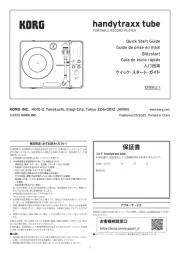
9 Juni 2025
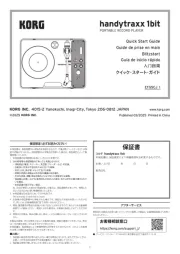
30 Mei 2025

2 December 2024
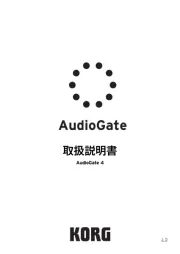
2 December 2024

16 Mei 2023

14 April 2023

11 April 2023

1 April 2023

18 Maart 2023

13 Maart 2023
Handleiding Hifi systeem
Nieuwste handleidingen voor Hifi systeem
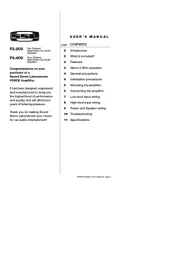
5 Augustus 2025
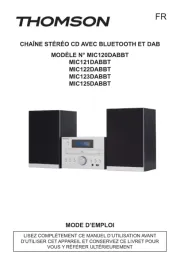
5 Augustus 2025
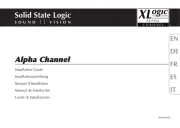
4 Augustus 2025

4 Augustus 2025

4 Augustus 2025
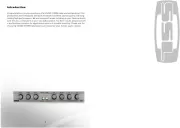
4 Augustus 2025

4 Augustus 2025
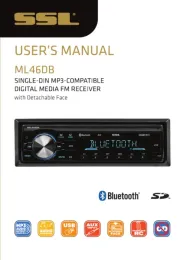
4 Augustus 2025
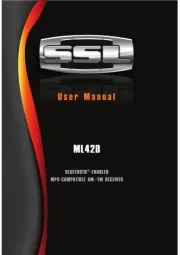
4 Augustus 2025
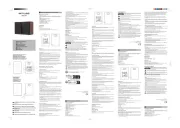
3 Augustus 2025